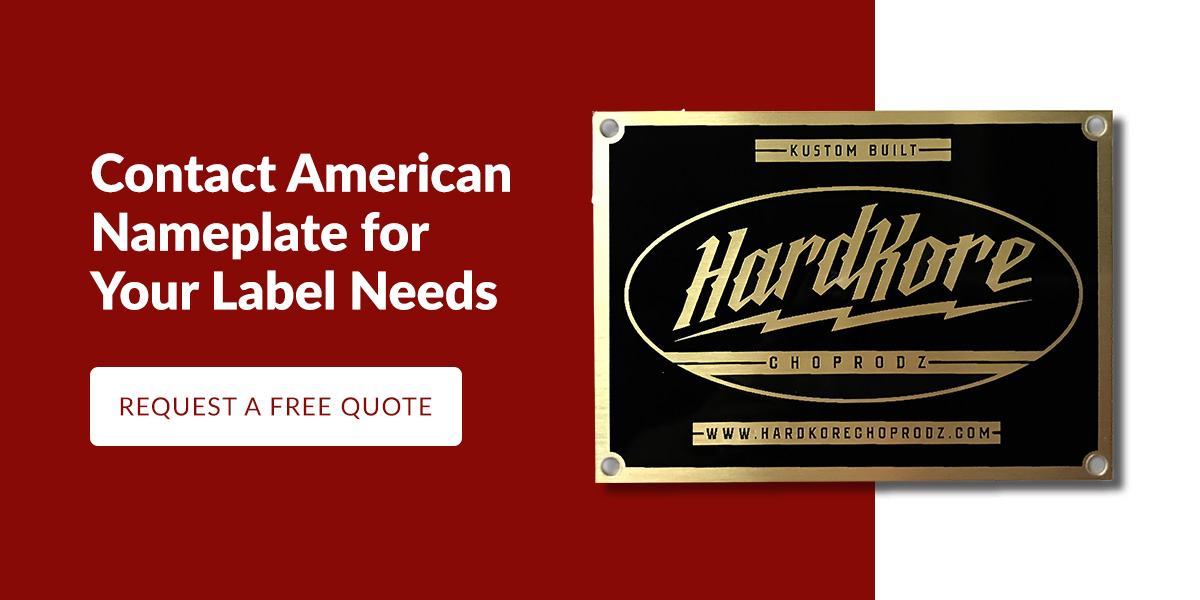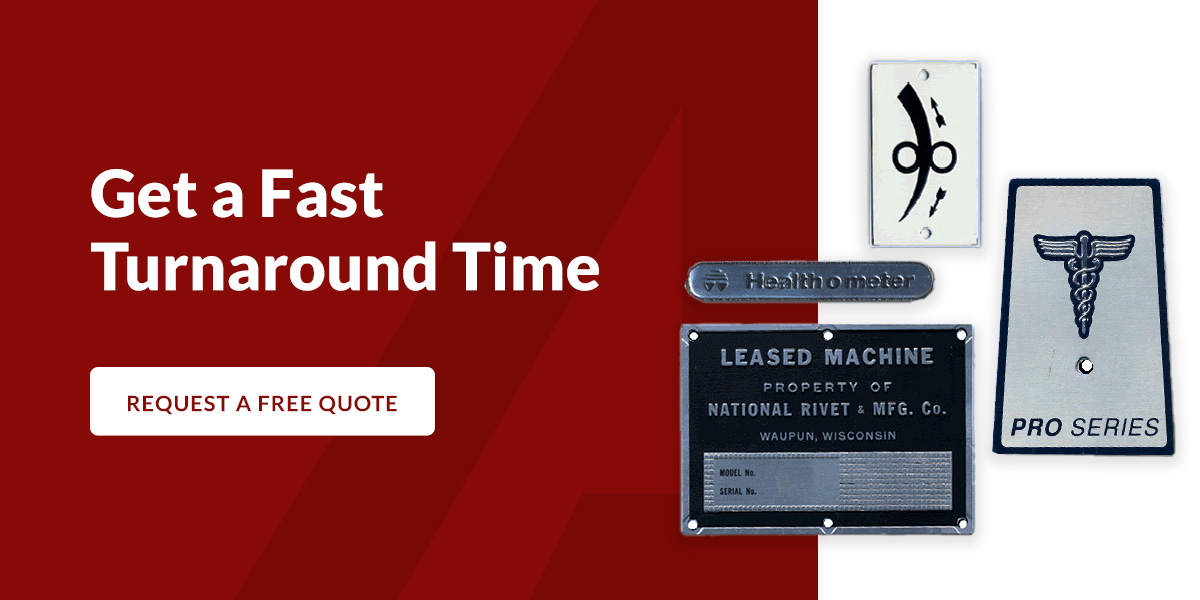Everything You Need to Know About Metal Nameplates
Nameplates serve many purposes in industries. Whether you need a plaque or an information panel, choosing the right material for the job is important.
Aluminum
Consider aluminum if you’re in the manufacturing or energy industries. This versatile material can be used for safety plates, identification plates and barcodes. The benefits of aluminum include:
- Durability: Aluminum withstands corrosion, so it can survive bad weather and chemical exposure.
- Weight: It is lightweight compared to many other nameplate materials and can be manufactured thinly.
- Color: This material has anodizing and photo-sealing capabilities, making it an excellent choice for adding color to your nameplate.
- Cost: Aluminum costs less than other pure metals.
Brass
Brass nameplates serve both aesthetic and practical purposes. Their beauty, resistance to corrosion and nonsparking nature make them popular with corporations and the electrical and plumbing industries. Consider these characteristics when you’re deciding if brass is a suitable material for your nameplates:
- Durability: Brass can be used both indoors and outdoors because it withstands extreme temperatures, corrosion, chemical solvents and dirt.
- Appearance: The bright hue of brass provides elegance without the high cost of gold.
- Nonsparking quality: Since it does not contain iron, brass does not spark with impact from other metals.
- Malleability: Brass is a composite of zinc and copper, and the copper in its makeup allows it to be formed into different shapes.
Stainless Steel
The manufacturing, food service and transportation industries must meet rigorous safety standards. Stainless steel’s strength is ideal for businesses where cleanliness is paramount. Here are a few more reasons to choose this metal:
- Durability: Stainless steel offers some resistance to bending, denting, scratching and corroding.
- Welding: This material is easy to weld, so the attachment process is simple.
- Hygienic properties: It’s antibacterial and easy to clean.
- Attractive appearance: Stainless steel keeps its shine without constant polishing.
- Long-term cost: The metal’s initial cost is an investment, but it requires less maintenance and repair over time.
Nameplate Creation Processes
Once you’ve selected a material that fits your business, you’ll need to choose a process for creating your nameplate. At American Nameplate, we offer a wide range of techniques, including:
Contact American Nameplate for Your Label Needs
If you’re replacing old nameplates or adding nameplates to a new business, contact American Nameplate for all your metal label needs. Request a free quote today, and we’ll hold that price for 30 days to give you time to decide on your purchase.












